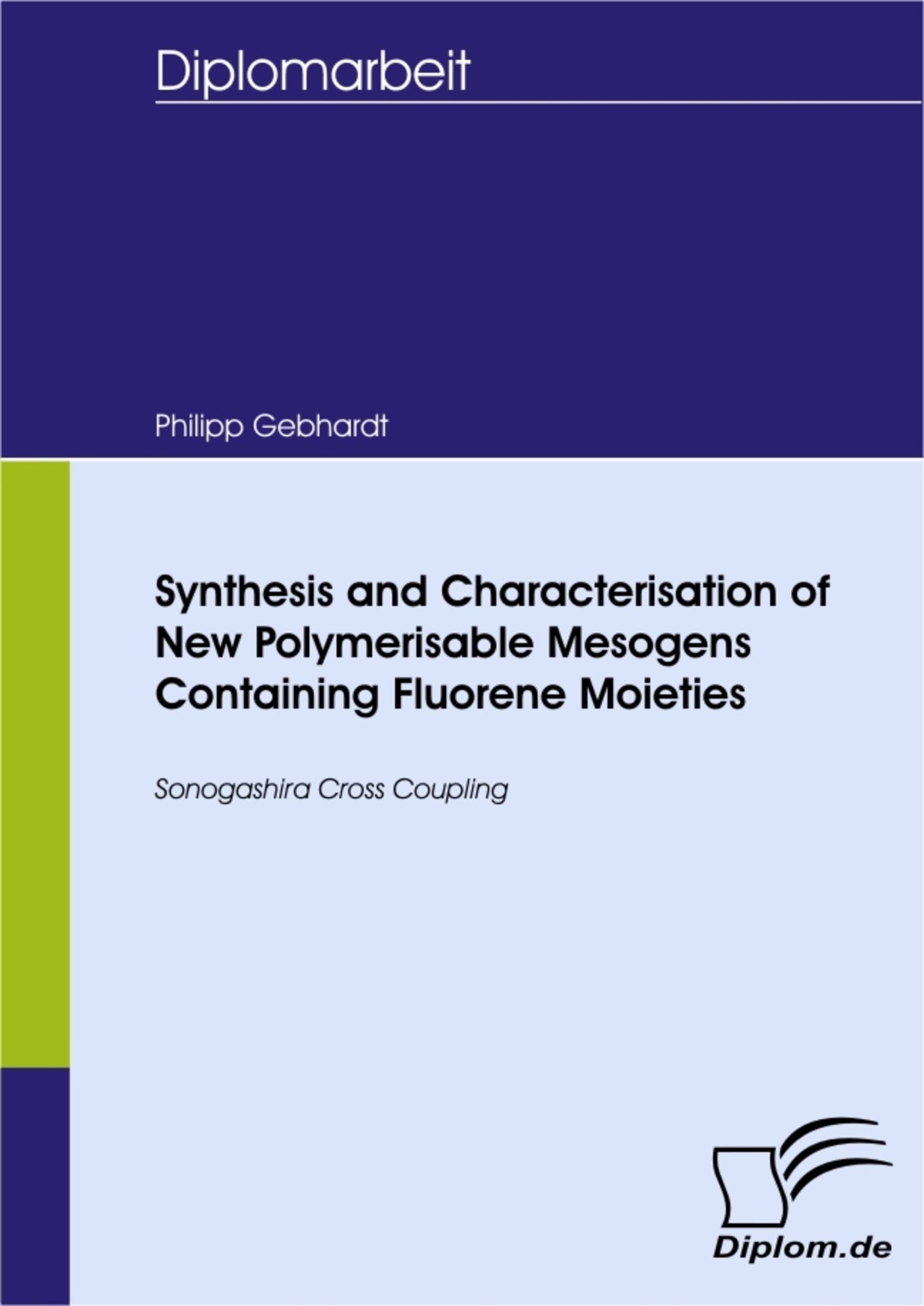Synthesis and Characterisation of New Polymerisable Mesogens Containing Fluorene Moieties
Sonogashira Cross Coupling
| Auflage | 1. Auflage, 2009 |
| Verlag | diplom.de |
| ISBN | 9783836627306 |
Sofort zum Download (Download: PDF)
Produktbeschreibung
Inhaltsangabe:Introduction: Liquid crystals present an intermediate state of matter. In a liquid the molecules are in contact but are able to move past each other. In a crystal the molecules are not able to move past one another, they are incorporated in the cystalline lattice, giving the system a long-range order. In nematic liquid crystals, the molecules are arranged in such a way that their longitudinal axes are mutually parallel but they are easily able to move in the direction of their longitudinal axes. Thus, liquid properties like fluidity and viscosity as well as optic properties that are shown by crystals like the reflection of different colours depending on the viewing angle are observed simultaneously. The incorporation of photopolymerisable groups provides monomers for temperature independent polymerisation. After polymerisation in the LC phase and subsequent cooling, the molecular orientation within the system can be frozen in, thus, materials with special qualities can be obtained. These materials have direction-depending optical and mechanical properties consequently they represent an area of scientific interest and technological potential. In the present work three new mesogens, molecules with liquid crystalline behaviour in a determined temperature range were synthesized. They have the above illustrated structure. One of them is a direactive monomer for the creation of a threedimensional network. Due to their structure, the compounds show fluorescence and are suitable for new materials with application in electro-optical devices like LCDs. The present thesis describes the synthesis of the new mesogens and their characterisation with FT-IR, 1H and 13C NMR. The influence of the molecular structure on the thermotropic properties is discussed and the liquid crystalline properties are examined by polarisation microscopy and DSC. Moreover, ways for obtaining and characterising orientated thin films are bescribed.Inhaltsverzeichnis:Table of Contents: Table of Abbreviations1 1.Introduction2 1.1Liquid Crystals: Structure and Properties2 1.2Classification of Liquid Crystals6 1.3Applications of Liquid Crystals8 1.4Liquid Crystalline Polymers and their Application11 1.5Luminescence13 1.6Aim and Scope of the present Thesis15 2.Results and Discussion17 2.1Synthetic pathways to the new LC fluorene derivatives17 2.2Structural Characterisation of the fluorene derivates20 2.3Differential Scanning Calorimetry27 2.4Polarisation [...]
